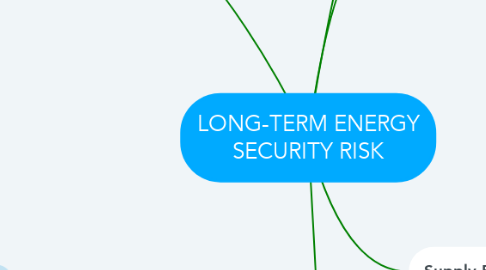
1. Promoting Energy Security
1.1. Improving Energy Efficiency
1.1.1. Consistent and comprehensive policies
1.1.2. Systematic approach along the energy value chain
1.1.3. Promote energy efficient transportation and urban management systems
1.1.4. Focus on efficiency improvement in energy production and transportation
1.2. Developing and Diversifying Energy Supplies
1.2.1. Developing Energy Supplies
1.2.1.1. in the case of power sector
1.2.1.1.1. Promote policies that secure adequate cash flow
1.2.1.1.2. Encourage new private investment
1.2.1.2. in the case of oil sector
1.2.1.2.1. Increase the effectivenes of National Oil Companies (NOCs), or state-dominated joint ventures
1.2.1.2.2. Reducing the barriers to private investment
1.2.1.2.3. Improving transparency in oil sector
1.2.2. Developing Energy Portfolio
1.2.2.1. Promoting natural gas consumption
1.2.2.2. Accelerating renewable energy development and distributed energy
1.2.2.3. Nuclear Energy
1.2.2.4. Support for clean coal
1.2.2.5. Ensuring appropriate national legislation
1.2.2.6. Enhancing fuel switching capabiility
1.3. Facilitating Energy Trade
1.3.1. Electricity system integration
1.3.2. LNG for trade growth potential is high
1.3.3. Government
1.3.3.1. International and bilateral treaties that facilitates trade and transit,
2. Managing Short Term Volatility
2.1. Reducing Potential for Oil Shocks in short term
2.1.1. Government efforts to manage demand in short term through administrative fiat or exhortation
2.1.2. Role of Organization of Petroleum Exporting Countries (OPEC) to address price volatility problems is constrained
2.2. High prices for supply lead to increase new investment
2.2.1. Strategic stocks by consuming countries have limited role to play because of their small size
2.3. Implications for International Action
2.3.1. promoting efficient use of energy in all economies through developing programs
2.3.2. Facilitating the access and security of cross border energy investment and transit
2.3.3. Building on the G8 commitment at Gleneagles to a low carbon economy and adaptation to climate change
2.3.4. Supporting and strengthening initiatives by international institutions and others to support the poorest countries
2.3.5. Promoting transparency about energy resources, use and production through the whole energy chain, especially in the critical oil market
2.4. Coping with Price Volatility in the short term
2.4.1. Allowing markets to work has avoided physical shortages of crude oil and product.
2.4.2. Supporting the most vulnerable where helping poor countries and adjust to impact of large oil prices increase
2.4.3. Not subsidizing consumption generally
2.4.4. Applying appropriate macro-economic policies
2.4.5. Greater Transparency
3. Definition of security of supply
3.1. Economic view
3.1.1. - is concept of maintain the stability of energy supply at reasonable price to avoid macroeconomic dislocations. - Energy matters are subject to market rules only.
3.2. Political view
3.2.1. - is continous availbility of energy in varied forms, in sufficient quantities and at affordable prices. - Energy policy depends on foreign policy, hard power and national security.
4. Supply Risk Analysis
4.1. Geological Risks
4.1.1. Short-term risk of not finding an economically sustainable geothermal resource (exploration phase).
4.1.2. Long-term risk of the geothermal resource naturally depleting threatening the long-term economically profitable production (operation phase)
4.2. Technical Risks
4.2.1. Infrastructure Failure
4.2.2. Risks due to the system failure from the weather or poor conditions of energy system. ex: blackout in Italy sept 2003 & fire incidents in Dubai 2012.
4.3. Economic Risks
4.3.1. Price volatility
4.3.2. Demand shocks
4.3.3. Currency fluctuations
4.4. Geopolitical Risks
4.4.1. Due to political instability
4.4.2. Trade restrictions
4.4.3. Terrorism
4.4.4. Corruption
5. Perspective on Energy Security
5.1. Energy Producers
5.1.1. ability to secure, long term and attractive markets for their natural resources
5.2. Major Industrialized Economies
5.2.1. continuing supply of energy that drives the economies at high level.
5.3. Poor Countries
5.3.1. energy helps them increasing the income and people's productivity, improve healthe and educations.
5.4. All Countries
5.4.1. ensuring the global economy finds the energy needed to grow in sustainable way.

